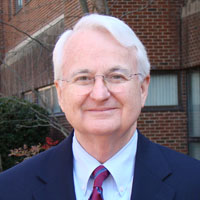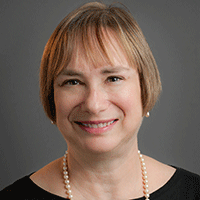Rozier, Weintraub co-author oral health paper commissioned by National Academies’ Roundtable on Health Literacy
February 22, 2018
Has a pediatrician offered to provide a fluoride varnish to your child’s teeth to prevent tooth decay?
Has your dentist checked your blood glucose level to see if you are at risk for Type 2 diabetes, or to determine whether your diabetes is well-controlled?
R. Gary Rozier, DDS, MPH, research professor of health policy and management at the UNC Gillings School of Global Public Health, and Jane A. Weintraub, DDS, MPH, Alumni Distinguished Professor at the UNC School of Dentistry and adjunct professor of health policy and management at the Gillings School, are co-authors of a paper that explores these and similar questions about the integration of medicine and dentistry.
The comprehensive, 250-page paper, “Integrating Oral Health, Primary Care and Health Literacy: Considerations for Health Professional Practice, Education and Policy,” was commissioned by the National Academies of Sciences, Engineering and Medicine’s Roundtable on Health Literacy as part of a series of papers aimed at informing, inspiring and activating the development, implementation and sharing of evidence-based health literacy practices and policies.
Oral health and general health are linked inextricably, but in education, practice and policies, they have been considered as separate and treated by different types of health-care providers. By integrating oral health and primary care, providers can deliver more comprehensive and improved access to health services. Non-dental providers can have a key role in improving oral health and providing preventive oral health services, especially when people lack access to a dentist. Dental providers can help provide chairside screening, monitoring and preventive health services where access to medical care is limited.
However, the authors found these collaborations are still in early stages.
Through a review of published literature on the topic, the authors found only 24 studies of physicians’ integrating oral health services into their clinical practices, about half of which were services provided to children. They found six analyses related to dentists’ incorporating preventive health services, such as monitoring of blood glucose levels, into their dental practices.
In their analysis of services that integrated preventive and oral health care, the authors found 37 examples of oral health services carried out by medical providers, some of which included co-location of dental hygienists in primary-care practices. Twenty-two examples demonstrated some level of integration of case management or coordination of care services.
The publications did not frequently use the phrase “health literacy,” but it was clear in case studies that practices accommodated their patients’ low health-literacy levels. Dentists extended office hours; medical interpreters were used to educate patients; and technology was used in clever ways to state or reinforce a health message.
The authors provide a summary of health professional education efforts at the undergraduate, predoctoral, postdoctoral and continuing education levels that includes information about integrated services, having found that the amount of time devoted to oral health in advanced curricula is too little, and the topics are too limited.
They compare four case studies on innovative programs that represent different levels of integration of oral health services into primary care practices. One such successful program, “Into the Mouths of Babes,” a pediatric program in North Carolina developed to address childhood caries and access-to-care issues, was co-founded by Rozier.
The authors conclude that health-care delivery system models are developing rapidly and have potential for the integration of oral health. Research and improved policies, they say, will help integrate oral health and primary care services and will aid in implementing health literacy principles in patient care, health profession education and continuing education.
They offer a list of 21 recommendations that include:
- Charging a professional or governmental body with ongoing review of preventive health services usually provided in medical practices for use in dental practice and education and with the development of evidence-based reasons for their being incorporated into dentistry;
- Prioritizing oral health promotion and disease prevention in the integration activities as a way to reduce health disparities;
- Calling on the Center for Medicare and Medicaid Services and others funders to provide adequate funding for implementation and sustainability;
- Increasing time and resources devoted to oral health curricula for all primary-care professional education programs; and
- Establishing a searchable repository for storing digital resources on integrating oral health and general health.
Kathryn A. Atchison, DDS, MPH, professor at the University of California at Los Angeles School of Dentistry and Fielding School of Public Health, is lead author of the paper, which recently was made available online.
Read more about “Into the Mouths of Babes” in Carolina Public Health magazine.
Gillings School of Global Public Health contact: David Pesci, director of communications, (919) 962-2600 or dpesci@unc.edu


